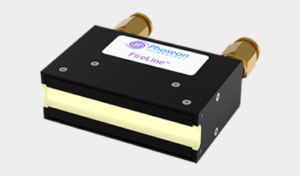UV LED curing refers to the unique way in which adhesives, coatings and inks are dried using “energy” from UV LED light sources rather than using heat or evaporation. In the approximately ten years since UV LED curing light sources appeared in the market, there have been significant technological advances in LED efficiency and curing lamp performance. The initial challenges have been met and overcome allowing rapid technology adoption across a broad array of industries.
As UV LED curing technology continues to gain worldwide adoption, it is important to keep in mind some of the important key features that build a robust product optimized for high performance and long lifetime. There are many product options on the market for UV LED, but not all of them are built to support rugged and industrial environments. LEDs, Arrays, Optics and Cooling are the four components that are used to maximize UV LED curing performance. Keep these in mind when selecting a UV LED supplier.
“LEDs, Arrays, Optics and Cooling are the four components that are used to maximize UV LED curing performance. Keep these in mind when selecting a UV LED supplier.”
Stacy Hoge, Marketing Communications Manager, Phoseon Technology
Not all LEDs are built the same nor do they exhibit the same characteristics. UV LED lamp suppliers have critical choices to make as to the quality, type, material and shape of LED for their systems. Key LED characteristics considered by each UV LED lamp supplier include wavelength and UV output.
Most applications require UV LED curing systems that consist of more than one LED or LED array in order to achieve not only the desired throughput but to meet the demands for curing applications where the media can be 1‐2m wide. Therefore, a key question is if the LED array can be uniformly scaled. UV LED curing lamps can have a continuous scalable array that provides for better uniformity or a discrete array package that can be scaled, but doesn’t provide the same uniformity of output.
UV LED optics is one of the most important differentiators in UV light sources. The science of optically improving the LEDs to maximize their UV output is key to the lamp’s final capability.
LED cooling is very important for UV light sources. UV LEDs transfer about 15‐25% of the received electrical energy into light. The remaining 75‐85% is transferred as heat; thus, the need to cool the LED arrays. Currently, UV LED arrays are cooled with either air or liquid. It is important to note that as the LEDs emit higher output power, the more heat is generated. Thus in the race to build ever higher irradiance products, the ability of suppliers to control and remove heat has become more crucial to building reliable systems.
Ink formulation for LED technology has evolved significantly, and today, there are a growing number of suppliers developing inks that work well with LED technology. As the technology has become more powerful and more compatible inks are available, this has resulted in substantial advanced capabilities for UV printing.
UV LED based curing is now an accepted user-friendly tool in adhesive, coating and printing markets. These industries continue to challenge and drive the formulation/chemical material suppliers with UV LED wavelength optimized materials. At the same time, UV LED curing units have become more efficient in delivering higher energy to the media thus driving not only environmentally clean, energy efficient and compact size units but also with increased throughput and process flexibility.
Tags: UV LED Technology | UV LED Industrial Curing | Polymers Paint Colour JournalCategories: Inks | Printing, Flexo | Wood | Coatings
